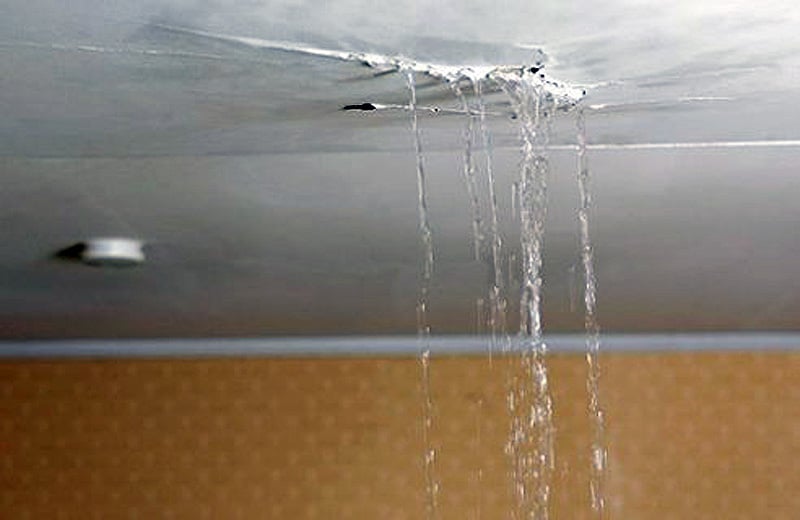The Six Most Common Origins of Water Leaks in Your Home: A Guide
The Six Most Common Origins of Water Leaks in Your Home: A Guide
Blog Article
How do you feel when it comes to How Fast Water Damage Can Ruin Your Home?

Leaks not only trigger waste of water but can also cause unneeded damages to your house and also advertise undesirable organic growth. Water leaks could go undetected given that many of the pipework in our residence is concealed. By looking as well as understanding for day-to-day scenarios that trigger leaks, you can secure your residence from future leakages as well as unneeded damage. Today, we will consider 6 leakage triggers that may be creating your pipelines to leak.
Instantaneous temperature level modifications.
Severe temperature level changes in our pipes can create them to expand and also acquire unexpectedly. This growth and tightening may create fractures in the pipelines, particularly if the temperature are below freezing. If you maintained an eye on how your plumbing functions, it would be best. The existence of the formerly discussed scenarios frequently suggests a high threat.
Rusty water supply
This could be the reason of staining or warping on your water pipes. If our plumbing system is old, think about changing the pipelines considering that they are at a greater threat of deterioration than the newer models.
Faulty Pipe Joints
Pipeline joints can degrade over time, resulting in water leaks. If you have loud pipelines that make ticking or banging noises, particularly when the hot water is turned on, your pipe joints are most likely under a whole lot of pressure.
Trespassing roots
Most water leakages start outside the house instead than inside it. You might notice damp spots or sinkholes in your yard, and also that may imply that tree origins are getting into water lines triggering water to seep out.
Poor Water Connectors
At times, a leak can be caused by loosened hose pipes and also pipes that provide your appliances. In case of a water links leakage, you may notice water running straight from the supply line or puddles around your home appliances.
Clogged Drains
Obstructed drains pipes may be frustrating and inconveniencing, however they can sometimes end up causing an overflow bring about burst pipelines. Keep eliminating any kind of materials that may drop your drains that might obstruct them to avoid such hassles.
All the above are sources of leakages however not all water leakages result from plumbing leaks; some leaks could come from roof leakages. All leakages should be repaired immediately to prevent water damages.
Leakages not just cause waste of water yet can also create unneeded damage to your residence as well as promote undesirable natural development. By understanding as well as looking for day-to-day situations that create leaks, you can shield your residence from future leaks and unneeded damages. Today, we will look at six leak creates that may be causing your pipes to drip.
At times, a leak can be caused by loose hose pipes and pipes that supply your appliances. In case of a water connections leak, you may discover water running straight from the supply line or pools around your devices.
How To Check For Water Leak In Your Home
How To Check for Leaks
The average household's leaks can account for nearly 10,000 gallons of water wasted every year and ten percent of homes have leaks that waste 90 gallons or more per day. Common types of leaks found in the home are worn toilet flappers, dripping faucets, and other leaking valves. These types of leaks are often easy to fix, requiring only a few tools and hardware that can pay for themselves in water savings. Fixing easily corrected household water leaks can save homeowners about 10 percent on their water bills.
To check for leaks in your home, you first need to determine whether you're wasting water and then identify the source of the leak. Here are some tips for finding leaks:
Take a look at your water usage during a colder month, such as January or February. If a family of four exceeds 12,000 gallons per month, there are serious leaks.
Check your water meter before and after a two-hour period when no water is being used. If the meter changes at all, you probably have a leak.
Identify toilet leaks by placing a drop of food coloring in the toilet tank. If any color shows up in the bowl after 10 minutes, you have a leak. (Be sure to flush immediately after the experiment to avoid staining the tank.)
Examine faucet gaskets and pipe fittings for any water on the outside of the pipe to check for surface leaks.
Undetected water leaks can happen without the home or business owner even realizing. If you suspect a water leak, but not able to find the source. It is time to contact a professional water leak detection service, The Leak Doctor.
How To Find a Water Leak In Your Home
https://www.leakdoctor.com/blog/How-To-Check-For-Water-Leak-In-Your-Home_AE197.html

I have been very eager about How Fast Water Damage Can Ruin Your Home and I hope you enjoyed our blog post. Are you aware of anybody else who is involved in the subject? Feel free to share it. Many thanks for going through it.
Click Here Report this page